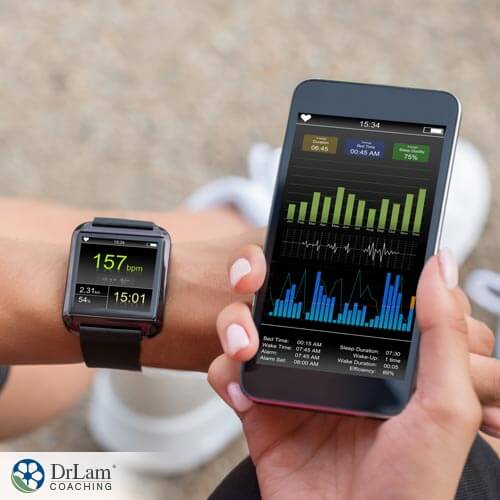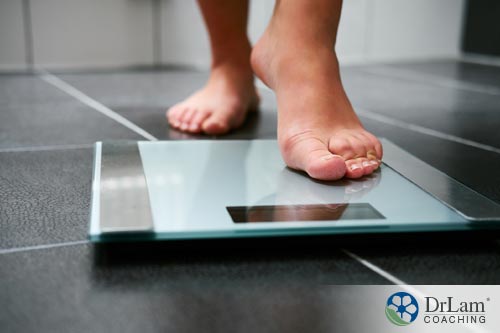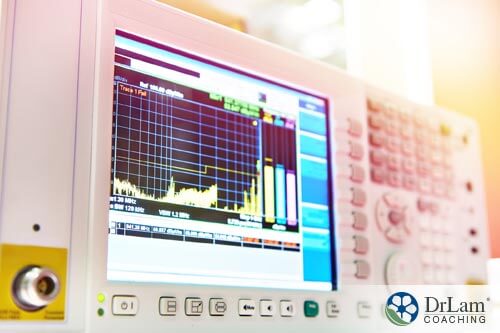 Over the past decade, digital technology has taken the world by storm. While digital trends usually tend to focus on lifestyle, attention is increasingly being turned toward health tech. One of the main reasons for this is that consumers are becoming increasingly more concerned with bettering their health and addressing any underlying health issues. Health tech and corresponding health wearables (wearable devices) are not only receiving more attention from those in the medical field but everyday consumers as well.
Over the past decade, digital technology has taken the world by storm. While digital trends usually tend to focus on lifestyle, attention is increasingly being turned toward health tech. One of the main reasons for this is that consumers are becoming increasingly more concerned with bettering their health and addressing any underlying health issues. Health tech and corresponding health wearables (wearable devices) are not only receiving more attention from those in the medical field but everyday consumers as well.
This is especially the case now that this type of technology has started to become more accessible to the average Joe, and more importantly, affordable. So, how can this trend benefit those suffering from adrenal fatigue and its vast range of symptoms?
First, we’ll address the above question and then we’ll take a look at health tech and some of the wearables that may improve your quality of life if you’re suffering from Adrenal Fatigue Syndrome (AFS).
As the health tech revolution increases its pace, the speed at which new innovations are coming to market is also increasing. These new innovations are not only helping us monitor and improve our overall health and wellbeing, but also putting us in a favorable position in terms of monitoring and managing health conditions.
Millions upon millions of fitness bands and smartwatches have been sold since their introduction into the consumer market. The devices are fitted with various sensors and medical applications, allowing people to take responsibility for their own health. Blood sugar monitors, for example, have made the lives of those suffering from type-2 diabetes much easier.
 According to the Centers for Disease Control and Prevention (CDC), coronary heart disease results in the deaths of over 370 000 people every year and an estimated 735 000 Americans have a heart attack each year. Of the latter, about 270 000 have already have had a previous heart attack. This type of cardiac event is responsible for one in every four deaths. One of the causes of coronary heart disease is a sedentary lifestyle and all its negative consequences. Trackers that alert you to your risk of heart attack could potentially allow you to take the necessary precautions or make changes to improve your health and could thereby reduce your overall risk.
According to the Centers for Disease Control and Prevention (CDC), coronary heart disease results in the deaths of over 370 000 people every year and an estimated 735 000 Americans have a heart attack each year. Of the latter, about 270 000 have already have had a previous heart attack. This type of cardiac event is responsible for one in every four deaths. One of the causes of coronary heart disease is a sedentary lifestyle and all its negative consequences. Trackers that alert you to your risk of heart attack could potentially allow you to take the necessary precautions or make changes to improve your health and could thereby reduce your overall risk.
Health tech devices put us in the unique position of being able to monitor our physical activity in great detail. Some of these devices have tiny chips and sensors that attach to trainers, and there are even shorts that give highly specific feedback, such as cadence, posture, and bounce, on a range of activities. As these sensors are developed even further, we’ll be able to gain a more detailed understanding of how our bodies work. Moreover, the most well-known applications, i.e., monitoring your heart rate or the number of steps you’ve run or walked, are no longer the only options.
In order to set particular health goals, it’s important to first understand your specific needs. In other words, what do you need to change in terms of your sleep pattern, diet, exercise routine, or mental wellbeing. There are many wearables that address these issues and can help you make the necessary modifications required to optimize your health.
The Lumo Lift is one such example. The wearable device vibrates when you slouch, thereby helping you improve your posture. It also tracks your activity levels, including the number of steps you’ve taken, distance you’ve walked or run, and the number of calories you’ve burned off during the process. The device is worn near your collarbone and along with an app serves a few different purposes, such as improving back pain or preventing the typical hunched posture seen in so many of the elderly.
It comes with a lightweight wristband you can wear 24/7 called a ‘smart tracker’ that does exactly what the name implies: tracks the number of steps you take, how far you’ve traveled, and also your sleep. These are just some of the basic tracking tools found in wearables, but there are a numerous additional functions available.
 The first step in maintaining or improving your health is identifying the areas you need to focus on and setting actionable goals for yourself. We often have wonderful intentions—get fit, lose weight, join a gym, or go on a diet—yet find ourselves failing. The pressure we face in our daily lives—whether due to family commitments or pressure you’re under at work—can make it a struggle to meet your goals.
The first step in maintaining or improving your health is identifying the areas you need to focus on and setting actionable goals for yourself. We often have wonderful intentions—get fit, lose weight, join a gym, or go on a diet—yet find ourselves failing. The pressure we face in our daily lives—whether due to family commitments or pressure you’re under at work—can make it a struggle to meet your goals.
Getting enough exercise, and the right kind, doesn’t have to mean a one-hour workout at the gym five days a week. A healthy adult only only needs 150 minutes of moderate aerobic activity per week—activities such as brisk walking or cycling—and some strength training two to three times per week—activities that work your major muscles including your legs, abdomen, hips, arms, and shoulders. So, you don’t necessarily have to commit to intense weightlifting sessions or high-intensity workouts at the gym.
If you suffer from adrenal fatigue, while you do need some exercise, it’s important to be cognizant of the type of exercise you do since strenuous workouts could have a negative impact on your overall health.
The various health tech fitness wearables available on the market will allow you to set yourself achievable daily goals and reminders, thereby making sure you move around a lot more. For example, sports watches aren’t just for competitive runners anymore. They can be used to help anyone stay active by providing notifications that remind you to move or stand when you’ve been inactive for too long. By doing so, this will hopefully discourage you from a sedentary lifestyle. An added bonus is that some wearables provide regular updates on your progress, so you can stay motivated in your efforts. Some apps even track your workouts using your smartphone’s built-in GPS.
Unfortunately, diet is an important component of most chronic conditions, including cancer, obesity, heart conditions, and type-2 diabetes. Keeping track of what you eat, especially considering all those hidden calories and additives in take-outs, can be near impossible. Paying attention to your diet can be even more difficult while juggling work commitments, looking after your family, and trying to manage your schedule. This may be why we often find ourselves in a position where we have no idea how many calories we’ve consumed throughout the day. However, there are many apps that can help you log what you eat. Some of these have a free online calorie counter in addition to a diet plan. Another device can analyze and tracks not only your calorie intake, but the carbs, protein, fiber, and fat content while measuring the glycemic load.
Quality of sleep doesn’t just refer to how much sleep you get, it also refers to how well you sleep. Of course, sleep has many health benefits, such as making you less likely to snack and improving your memory.
Certain health tech wearables have a heart rate monitor and record how much sleep you’ve had. They also record the number of times you’ve woken up during the night, how often you were restless, and the duration of each. By gaining an idea of your overall quality of sleep, you’ll be in a better position to improve it.
It is estimated that over 70% of Americans are either overweight or obese, moreover, almost 40% of adults and 20% of children between the ages of six and 19 are classified as obese. Obesity has been linked to numerous life-threatening conditions, such as diabetes, heart disease, and stroke. A smart weighing scale linked to an app can help you track your weight loss goals and progress.
 When tracking your weight, your muscle mass versus your body percentage is more important than your weight or body mass index. In fact, many people who exercise experience weight gain because muscle weighs more than fat.
When tracking your weight, your muscle mass versus your body percentage is more important than your weight or body mass index. In fact, many people who exercise experience weight gain because muscle weighs more than fat.
Certain smart scales and body analyzers can measure your muscle mass and bone mass, as well as your heart rate and the percentage of water in your body. These statistics will give you greater insights into your overall progress while you’re on your weight loss journey.
High-tech scales will even send this information to your computer and display all the relevant data in graphs. This will enable you to set yourself goals and actually achieve them.
Adrenal fatigue is a debilitating condition that affects all the systems of your body. It is the result of constant stress—which can be psychological, environmental, or physiological in nature—and during the initial stages, is associated with the constant release of high levels of cortisol. This automatic response to stress, i.e., the rise in cortisol production, is known as your NeuroEndoMetabolic (NEM) stress response and is perfectly normal. The latter stages of adrenal fatigue, however, see a slow yet steady decline of cortisol levels. Unfortunately, both the preliminary and latter stages of the condition are associated with the rise and possible increase in intensity of a myriad of symptoms. The large variation in symptoms is what makes the condition so difficult to diagnose, and the chances of two people showing the same symptoms at any given time is extremely slim.
Conditions commonly associated with adrenal fatigue include, weight gain, blood sugar issues, insulin resistance, type-2 diabetes, weight gain and obesity, heart conditions, and sleeping issues, among others. Many of these symptoms could be monitored by means of health tech wearables.
Very often adrenal fatigue and its various symptoms feed off each other. While adrenal fatigue may encourage just one symptom, the symptom itself may cause stress that, in turn, feeds into your adrenal fatigue, leading to more and more symptoms. Wearables may help you implement lifestyle changes, so you can stave off or manage your symptoms and recover from adrenal fatigue.
People who tend to be sensitive to electromagnetic frequencies (EMFs) may need to rethink their decision before purchasing or using any of these wearables. Just like electricity, the power sources used to operate these devices give off electromagnetic fields, i.e. electromagnetic radiation, that may increase the intensity of your symptoms.
Interestingly, EMFs tend to affect the pineal gland, which is one of the endocrine glands found in your brain. This gland, together with your eyes, are the two organs most sensitive to this type of radiation. Your pineal gland is responsible for the production of melatonin and other hormones, therefore anything that has an adverse effect on your pineal gland will have a corresponding negative effect on your hormone levels. Low melatonin levels alone have been linked to chronic fatigue and the incidence of fibromyalgia, while hormonal imbalances, in general, are strongly linked to the incidence of AFS.
In addition, constant exposure to EMFs can cause excessive cellular vibration throughout your entire body that could cause tension in your muscles. This, in turn, will heighten your stress levels and place your body in a constant state of fight or flight, with the accompanying increase in cortisol production. There are many articles on Dr. Lam’s website explaining just how cortisol could potentially have a negative effect on your body and result in adrenal fatigue and the various associated symptoms.
People who are hypersensitive to EMFs tend to experience more symptoms closely related to adrenal fatigue, including
 At the end of the day, while health tech, and all its gadgets, may help you in your efforts to achieve and maintain a state of good health, people who tend to be sensitive to EMFs should think twice about purchasing and using wearables. Although the radiation given off by power sources of wearables may be relatively weak, for someone with a hypersensitivity, the ‘tiny little device that may do no harm’ could also be the catalyst your body needs to worsen your condition. If this is the case for you, avoiding exposure to EMFs as much as possible may be your best recourse towards regaining and maintaining your health.
At the end of the day, while health tech, and all its gadgets, may help you in your efforts to achieve and maintain a state of good health, people who tend to be sensitive to EMFs should think twice about purchasing and using wearables. Although the radiation given off by power sources of wearables may be relatively weak, for someone with a hypersensitivity, the ‘tiny little device that may do no harm’ could also be the catalyst your body needs to worsen your condition. If this is the case for you, avoiding exposure to EMFs as much as possible may be your best recourse towards regaining and maintaining your health.
Tech health gadgets can be beneficial for those with certain adrenal fatigue symptoms by supporting and promoting your overall health. However, adrenal fatigue is not something that develops overnight and the road to recovery is a long one that requires addressing the root cause of your condition.
